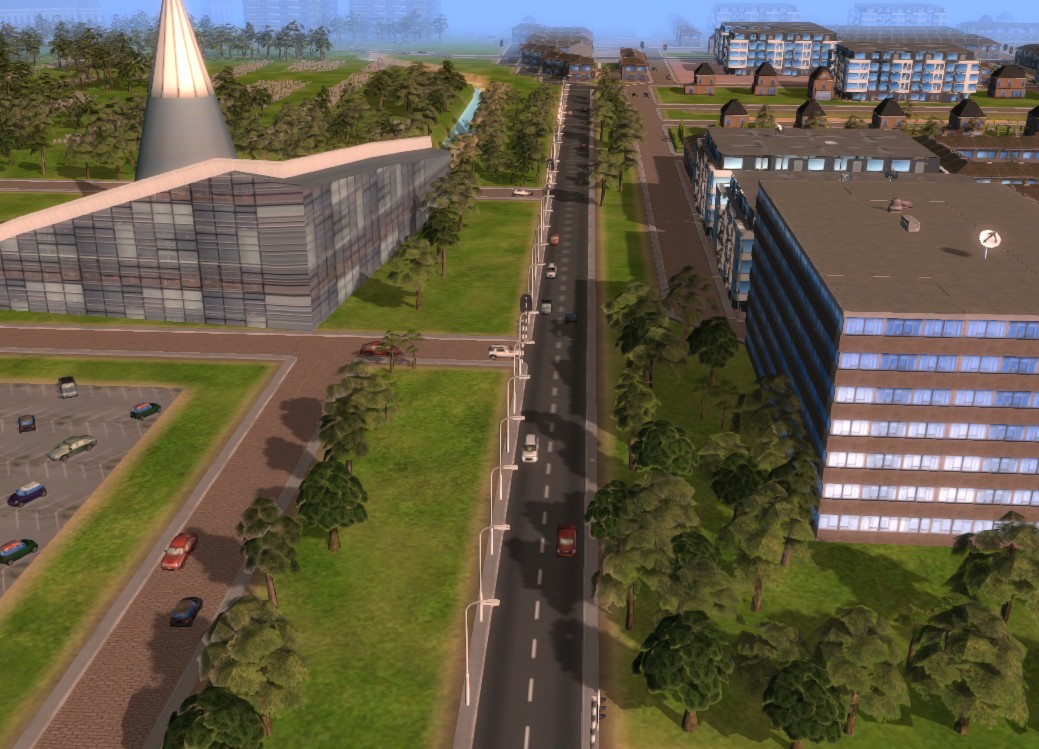3D Visualization: Difference between revisions
Jump to navigation
Jump to search
| Line 35: | Line 35: | ||
==== Ownership ==== | ==== Ownership ==== | ||
: ''Another important element of the 3D world is ownership of property. Actions can normally only performed on property that is owned by the acting stakeholder. To accomodate this, stakeholders can buy and sell land from and to each other, opening all new ways to approach the objectives. It is one of the mechanics that can force players to communicate and cooperate directly with each other.'' | : ''Another important element of the 3D world is ownership of property. Actions can normally only be performed on property that is owned by the acting stakeholder. To accomodate this, stakeholders can buy and sell land from and to each other, opening all new ways to approach the objectives. It is one of the mechanics that can force players to communicate and cooperate directly with each other.'' | ||
: ''For more detail, please see [[Ownership]].'' | : ''For more detail, please see [[Ownership]].'' | ||
Revision as of 11:46, 15 August 2014
After reading this page
- you've learned what the 3D World is
- you've learned how the 3D world relates to the Tygron Engine
- you've learned out of which elements the 3D world is created
- you've learned how to create a 3D world
- you've learned how to edit the 3D world
What is a 3D World?
- The 3D World is a visual representation in three dimensions of (a part of) the real world or a virtual area.
What is the function of the 3D World in the Tygron Engine?
- When playing a game in the Tygron Engine, a three dimensional (3D) visualization of the game area is rendered. In this 3D world the players can together navigate and perform their stakeholders' actions. The effects of their actions are also instantly visualized, delivering direct visual feedback. When for example a stakeholder's action negatively affects water storage in the game area, floods will occur and be displayed during heavy rain fall.

Elements of the 3D world
The 3D world consists of certain elements. These elements will be shortly explained below, however, for more details, please follow the links for the specific pages of these elements.
Constructions
- Constructions are all the objects that can be build/ placed in the 3D world. They are split in three main groups: standard buildings, landmarks and roads:
- Standard buildings:
- These constructions are divided in sub groups, such as offices, housing, industry, agriculture, etc.
- Landmarks:
- To improve player immersion and recognition, some objects are moddelled from real life landmarks. Examples are renowned constructions such as huge Dutch Delta works, university faculty buildings in Delft, the freedom towers in New York and other large spatial objects.
- Roads:
- This group contains all different types of road surfaces, from African dirt roads to high tech Vietnamese Rapid Transit train tracks.
- For more detail, please see Constructions.
Zoning
- The 3D world can be divided in different zones. Each zone can have it's dedicated zoning plan, describing which types of constructions are allowed. The municipality usually has the task to approve building permits according to what is allowed in these zoning plans.
- For more detail, please see Zoning.
Ownership
- Another important element of the 3D world is ownership of property. Actions can normally only be performed on property that is owned by the acting stakeholder. To accomodate this, stakeholders can buy and sell land from and to each other, opening all new ways to approach the objectives. It is one of the mechanics that can force players to communicate and cooperate directly with each other.
- For more detail, please see Ownership.